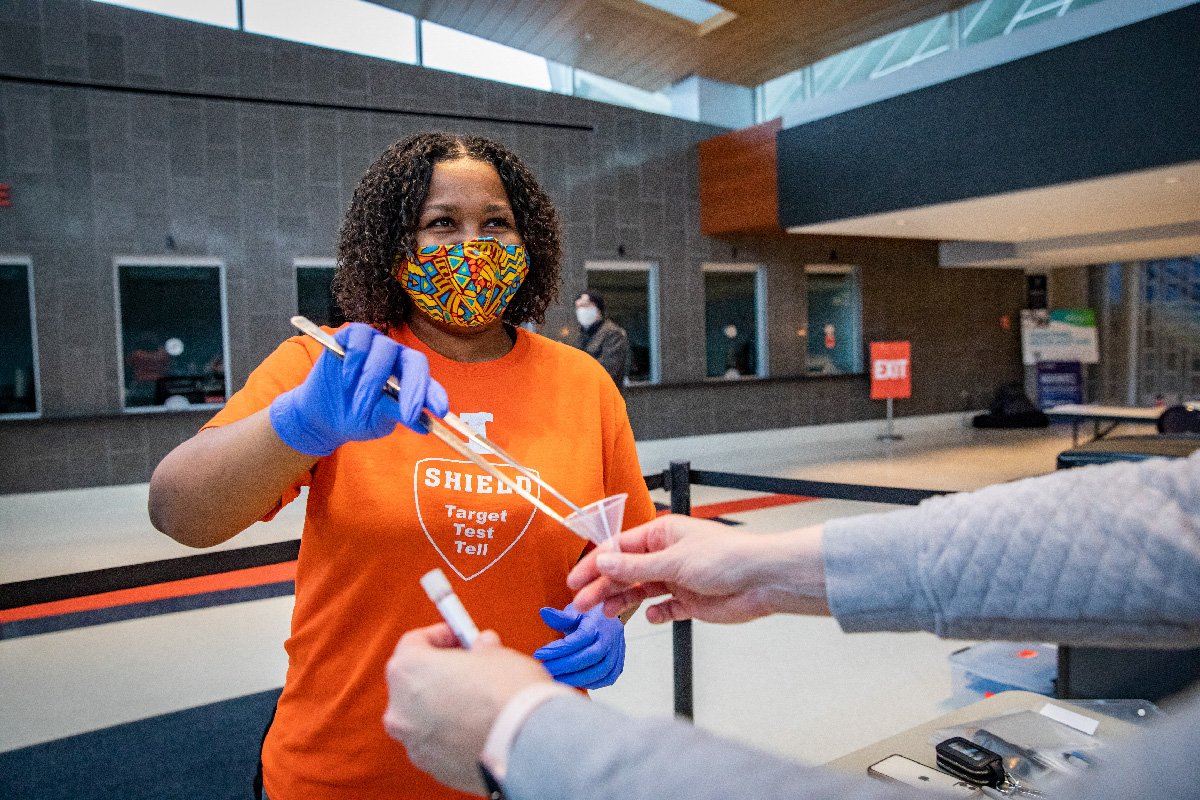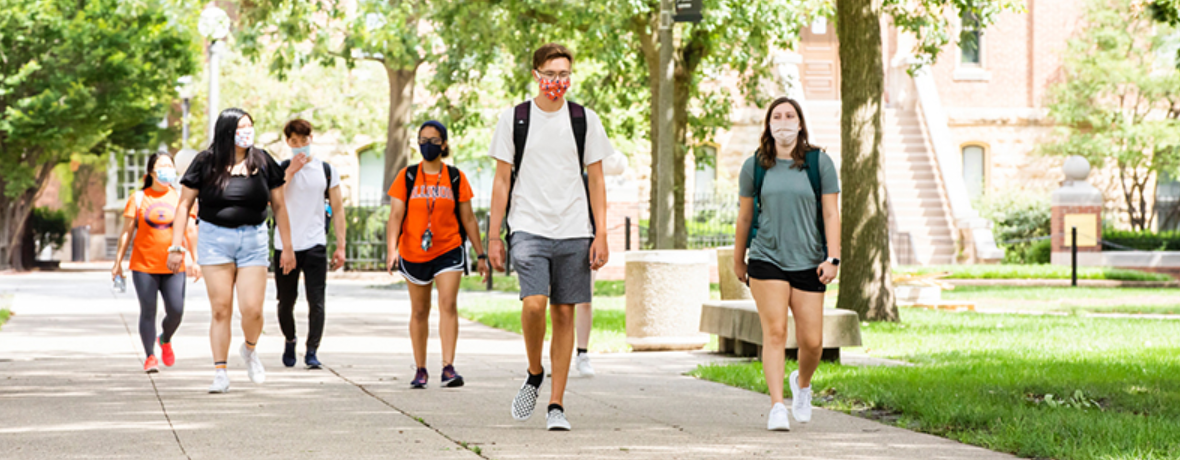
In just a few months, working in constant collaboration with local public health district and governments, a multidisciplinary team of Illinois experts used biophysical models and data to build a testing and tracing infrastructure and ecosystem that is unmatched anywhere in the nation.
University response
The testing protocol developed by the University of Illinois Urbana-Champaign directly detects the coronavirus that causes COVID-19 in saliva samples. Unlike conventional nasal testing, saliva samples are collected noninvasively, without requiring skilled health care workers. All students, faculty members and staff who reside in the area are required to test. In December 2020, the University of Illinois Urbana-Champaign administered its one millionth saliva-based COVID-19 test since initiating a broader management program last summer.
The testing is one part of the SHIELD three-pronged “target, test, tell” system that incorporates testing with data reporting, modeling and a smartphone app, working closely with the Champaign-Urbana Public Health District for contact tracing and isolation for individuals who test positive.
Learn more about the university’s COVID-19 safety protocols guidance.
Expanding efforts
The Grainger College of Engineering has completed the prototype for a mobile laboratory designed to demonstrate a way to rapidly deploy the saliva-based test for COVID-19 developed at Illinois. The mobile laboratory will serve as a resource on learning how to bring the Illinois-developed testing capability to communities across state and the country.
Additionally, a number of other institutions and companies are currently implementing the Illinois saliva-based testing system. The mobile laboratory is now expanding the innovative COVID-19 testing technology nationwide through SHIELD T3.
Learn more about COVID-19 testing at Illinois.
Continued innovation
The COVID-19 pandemic made clear the importance of Illinois innovation. From launching an emergency ventilator in under a week to developing a UV-robot that kills COVID-19, members of the Illinois research community continue to be hard at work creating new ways to treat, analyze and cope with the ongoing pandemic.
